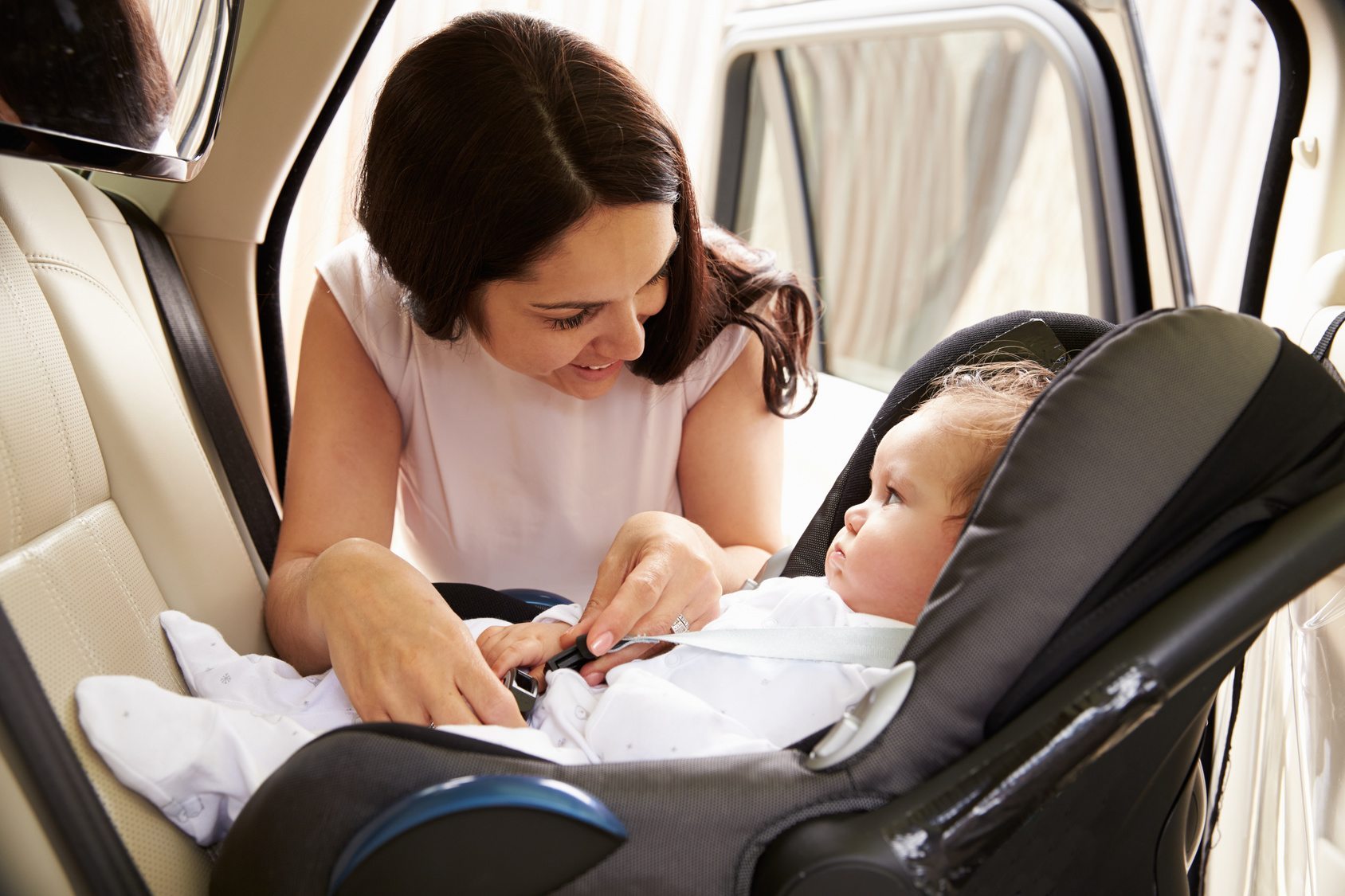How to Get Baby to Like Car Seat: Expert Tips for Success
To get your baby to like their car seat, try creating an adventure ritual by singing a silly song, buying a special toy, or playing their favourite tunes during car rides. Additionally, bring the car seat inside and let your baby play in it to make it more familiar.
Keep a box of soft, safe car toys that are only used in the car to keep them entertained. Talk to your baby, play kids music, or use car seat-safe mirrors for them to look at themselves and stay engaged during the ride.
Ensuring their comfort with enough toys, books, and a back seat mirror can help keep your baby happy in the car seat.
Heading: Understanding Baby’s Dislike For Car Seat
Help your baby develop a liking for the car seat by creating a fun and enjoyable experience. Sing silly songs, introduce special toys, cuddle before strapping them in, or play their favorite tunes to turn car rides into exciting adventures.
Factors Contributing To Baby’s Dislike For Car Seat
Babies can exhibit a strong dislike for their car seat, making car rides a challenging experience for both parents and babies alike. To understand why your little one might not enjoy their car seat, it’s crucial to consider a few key factors. First and foremost, the unfamiliar and restrictive nature of the car seat can be overwhelming for infants. They may feel confined and restricted in their movements, leading to discomfort and fussiness. Additionally, it’s essential to consider aspects such as improper positioning, incorrect installation, or uncomfortable padding that may be contributing to your baby’s dislike for the car seat. By recognizing these factors, parents can take the necessary steps to address their baby’s discomfort and make car rides a more pleasant experience for everyone involved.Importance Of Addressing Baby’s Discomfort
Addressing your baby’s discomfort in the car seat is crucial for several reasons. First and foremost, it ensures their safety while traveling. A fussy and restless baby can be distracting for the driver and compromise their attention on the road. Moreover, a baby who dislikes their car seat is more likely to struggle during car rides, which can further exacerbate their discomfort and potentially lead to prolonged crying episodes. This can not only be emotionally distressing for both the baby and the parents but can also impact the baby’s overall well-being. By addressing your baby’s discomfort in the car seat, you can create a more peaceful and secure environment during car rides, enhancing their safety and overall travel experience.Recognizing Signs Of Baby’s Discomfort In The Car Seat
It’s important for parents to be able to recognize the signs of discomfort that their baby may exhibit while in the car seat. By identifying these signs, parents can take appropriate measures to alleviate their baby’s discomfort and make car rides more enjoyable. Some common indicators of discomfort include: – Excessive crying or fussiness: If your baby is consistently crying or acting fussy when placed in the car seat, it may be a sign of discomfort. – Restlessness and squirming: Babies who are uncomfortable in their car seat may exhibit restlessness and squirming, as they try to find a more comfortable position. – Arching of the back: Arching of the back can be a sign of discomfort caused by an improperly positioned or incorrectly installed car seat. – Hunched posture: A baby who feels uncomfortable in their car seat may adopt a hunched posture, trying to alleviate the discomfort they are experiencing. – Distressed facial expressions: Look out for signs of distress on your baby’s face, such as furrowed brows or clenched fists, which may indicate their discomfort. By paying close attention to these signs, parents can make the necessary adjustments to the car seat’s positioning, padding, or installation to ensure their baby’s comfort and a smoother car ride.Subheading: Establishing A Positive Association With Car Seat
When it comes to getting your baby to enjoy their car seat, establishing a positive association is key. By creating a comfortable and inviting car seat environment, introducing your baby to the car seat gradually and positively, and using toys and activities to make car seat time enjoyable, you can help your little one feel at ease and even look forward to their time in the car seat.
Creating A Comfortable And Inviting Car Seat Environment
One of the first steps in getting your baby to like the car seat is to ensure that it is a comfortable and inviting space. Start by making sure the car seat is clean, free from any crumbs or debris. Consider adding a soft, cushioned insert to provide extra comfort for your baby. Ensure that the straps are adjusted properly and snugly, but not too tight, to keep your little one secure and comfortable during the ride. Creating a cozy and pleasant environment will help your baby feel more comfortable and relaxed in their car seat.
Introducing Baby To The Car Seat Gradually And Positively
Introducing your baby to the car seat gradually and positively can also help establish a positive association. Start by bringing the car seat into your home and allowing your baby to explore it in a familiar and comfortable environment. Let them sit and play in the car seat, making it a fun and enjoyable experience. Gradually introduce short rides in the car, starting with just a few minutes, and gradually increasing the duration over time. By taking it slowly and making each car ride a positive experience, your baby will become more comfortable with the car seat.
Using Toys And Activities To Make Car Seat Time Enjoyable
Adding toys and activities to the car seat can make car rides more enjoyable for your baby. Choose toys that are safe and age-appropriate, such as soft rattles or plush toys that can be securely attached to the car seat. Mobiles or activity bars that can be attached to the handle of the car seat are also great options to keep your baby entertained during the ride. Singing songs or playing calming music that your baby loves can also help create a positive and relaxing atmosphere in the car seat. By incorporating enjoyable toys and activities, you can make car seat time a fun and engaging experience for your baby.
Heading: Ensuring Proper Car Seat Installation
When it comes to your baby’s safety on the road, ensuring proper car seat installation is of utmost importance. Don’t overlook this crucial step, as it can make all the difference in keeping your little one secure and comfortable during car rides. In this section, we will discuss the importance of correctly installing the car seat, choosing the right car seat for your baby, and properly securing the car seat using seat belts or lower anchors.
Importance Of Correctly Installing The Car Seat
Proper car seat installation is essential for your baby’s safety while traveling in a vehicle. Incorrect installation can increase the risk of injury in the event of an accident or sudden stop. This is why it is crucial to follow the manufacturer’s instructions and ensure that the car seat is installed correctly.
When installing the car seat, make sure to double-check the angle and position. The car seat should be reclined at the appropriate angle to support your baby’s head and neck, especially if they are unable to sit upright independently. Be sure to secure the car seat tightly, so it doesn’t shift or move during the journey.
Choosing The Right Car Seat For Your Baby
Choosing the right car seat for your baby is equally important as installing it correctly. There are different types of car seats available, including rear-facing-only seats for infants, convertible car seats that can be used both rear-facing and forward-facing, and booster seats for older children.
Consider your baby’s age, weight, and height when selecting a car seat. Make sure it meets the safety standards and has passed all the necessary testing. Additionally, check for any recalls or safety concerns related to the specific car seat model.
Properly Securing The Car Seat Using Seat Belts Or Lower Anchors
Securing the car seat properly is crucial to ensure your baby’s safety. You can secure the car seat using either the seat belts or the lower anchors, which are also known as the LATCH system. Both methods can be effective if done correctly.
If you choose to use seat belts, thread them through the appropriate slots in the car seat and buckle them tightly. Make sure there is no slack in the seat belts and that the car seat is snugly fitted against the vehicle seat.
If you opt for the lower anchors, locate the anchors in your vehicle and attach the car seat’s hooks or connectors to them. Pull the straps tightly, so there is no movement or wiggling of the car seat.
Remember to consult your car seat’s manual and your vehicle’s owner’s manual for specific instructions on using seat belts or lower anchors for securing the car seat.
In conclusion, ensuring proper car seat installation is vital for your baby’s safety and comfort during car rides. Take the time to install the car seat correctly, choose the right car seat for your baby’s age and size, and secure it tightly using either seat belts or lower anchors. By doing so, you can have peace of mind knowing that your little one is well-protected while on the road.
Subheading: Tips For Correct Car Seat Installation
Proper installation of a car seat is essential for ensuring your baby’s safety and comfort during car rides. Follow these important tips for correct car seat installation:
Installing The Car Seat At The Correct Angle
Installing the car seat at the correct angle is crucial for your baby’s comfort and safety. A car seat should be reclined at the appropriate angle to provide proper support to your baby’s head and neck. Refer to the car seat manufacturer’s instructions to determine the correct angle for your specific car seat model, and make sure to adjust it accordingly.
Checking For A Tight Fit And Harness Tightness
A secure and snug fit is crucial for your baby’s safety. After installing the car seat, check for a tight fit by placing your hand at the base of the car seat and pressing down. There should be minimal movement. Additionally, ensure that the harness is tightened securely around your baby. To check the harness tightness, perform the pinch test: try to pinch the harness strap at your baby’s shoulder. If you can pinch any excess webbing, tighten the harness until no slack remains.
Utilizing Car Seat Fitting Services For Professional Help
If you are unsure about the correct installation of your baby’s car seat, consider utilizing car seat fitting services provided by professionals. These services are typically available at local fire stations, hospitals, or organizations dedicated to child safety. An expert can help you ensure proper installation and address any concerns or questions you may have, providing peace of mind knowing that your baby is safe and secure in the car seat.
| Benefits | Why it’s important |
|---|---|
| Professional expertise | Get expert advice on correct car seat installation |
| Personalized assistance | Address specific concerns or questions |
| Peace of mind | Ensure your baby’s safety on the road |
Remember, correct car seat installation is key to keeping your baby safe and comfortable during car rides. Take the time to install the car seat at the correct angle, ensure a tight fit and harness tightness, and consider utilizing car seat fitting services for professional help. These simple steps will help provide a secure and enjoyable car seat experience for your little one.
Heading: Strategies For Soothing An Unsettled Baby In Car Seat
Babies can sometimes become unsettled and fussy when they are placed in a car seat. This can make car rides challenging for both parents and their little ones. However, there are strategies you can use to soothe an unsettled baby in a car seat, helping them feel more comfortable and content during the journey. By implementing these techniques, you can make car rides a more pleasant experience for your baby and reduce any stress or anxiety they may feel.
Using Soothing Techniques To Calm A Fussy Baby In The Car Seat
When your baby is feeling fussy or unsettled in the car seat, there are several soothing techniques you can try to help them relax. One effective technique is gently rocking the car seat back and forth to mimic the motion they experienced in the womb. You can also try placing a warm blanket or swaddle around them to create a cozy environment that promotes relaxation. Additionally, using a pacifier or engaging in gentle touch such as patting or rubbing their back can provide comfort and soothe your baby.
Playing Soft Music Or White Noise To Create A Relaxing Environment
Another effective strategy for soothing an unsettled baby in a car seat is to play soft music or white noise. The rhythmic sounds can help create a calming environment and drown out any noise or distractions from the outside world. Consider using a baby-friendly playlist or investing in a portable white noise machine specifically designed for babies. As you play the music or white noise, make sure the volume is at a comfortable level and not too loud for your baby’s sensitive ears.
Engaging In Verbal Interaction And Singing To Distract And Comfort The Baby
Verbal interaction and singing can be powerful tools for distracting and comforting a baby in a car seat. Engage with your baby by talking to them in a soothing and reassuring voice, providing comfort and reassurance during the journey. You can also sing lullabies or other songs that your baby enjoys to create a positive and comforting atmosphere. The familiarity of your voice and the soothing melodies can help distract your baby from any discomfort they may be experiencing in the car seat.
Implementing these strategies can help create a more soothing and enjoyable car ride for your baby. Remember to prioritize their safety by ensuring the car seat is properly installed and adjusted to provide optimal support and protection. By combining these strategies with a secure and comfortable car seat setup, you can increase the chances of your baby feeling calm, settled, and content during car rides.
Subheading: Practical Tips For Soothing Baby In The Car Seat
Looking for tips to get your baby to like their car seat? Try creating an adventure ritual to make it more exciting, such as singing a silly song, buying a special toy, or playing their favorite tunes. Bringing the car seat inside and letting them play in it can also help familiarize them with it.
Planning Car Trips During Baby’s Nap Times
One effective strategy for soothing your baby in the car seat is to plan your car trips during their nap times. By ensuring that your little one is already tired, they are more likely to fall asleep in the car seat. This can help them associate the car seat with relaxation and sleep, making them more comfortable and content during future car rides.
Incorporating Familiar Scents And Objects In The Car Seat Area
Another practical tip for soothing your baby in the car seat is to incorporate familiar scents and objects in the car seat area. Babies love the sense of familiarity, so placing a blanket or toy that smells like home can provide them with a sense of comfort. This can help them feel more at ease during car rides and make the car seat seem like a safe and familiar space.
Employing Gentle Rocking Or Vibration Methods To Soothe The Baby
Gentle rocking or vibration methods can be highly effective in soothing your baby and ensuring a peaceful journey in the car seat. You can use products such as a car seat mobile or a special car seat insert that provides gentle vibrations. These movements can mimic the sensation of being rocked or held, which can help calm your baby and make them feel secure.
Additionally, you can also manually rock the car seat back and forth, if it is safe to do so while the car is stationary. This rhythmic motion can provide a soothing effect and help settle your baby into a more relaxed state. However, make sure to always prioritize safety and avoid any sudden or vigorous movements that could be harmful.
Overall, incorporating these practical tips can help make your baby more comfortable and content in the car seat. By planning car trips during nap times, using familiar scents and objects, and employing gentle rocking or vibration methods, you can create a soothing environment that makes car rides a more enjoyable experience for both you and your little one.
Heading: Maintaining Safety And Security In The Car Seat
To get your baby to like the car seat, try creating an adventure ritual by singing silly songs, buying a special toy for the car, or playing their favorite tunes. Making the car seat a positive and enjoyable experience can help reduce resistance and make traveling easier.
Ensuring Proper Harness Adjustment For Baby’s Safety
To maintain safety and security in the car seat, it is crucial to ensure that the harness is properly adjusted for your baby. The harness should fit snugly against the baby’s body, without any gaps or loose straps. This will prevent the baby from sliding out or being thrown forward in the event of a sudden stop or collision. To adjust the harness properly, follow these steps:- Place your baby in the car seat and fasten the harness straps.
- Ensure that the chest clip is positioned at armpit level.
- Check that the straps lie flat on the baby’s shoulders, without being twisted.
- Use the harness adjuster to tighten the straps until they are snug, but not overly tight.
- Perform the pinch test to ensure the harness is secure. Try to pinch the straps at the baby’s shoulder level. If you are unable to pinch any excess fabric, the harness is properly adjusted.
Identifying Potential Hazards And Eliminating Them
While using a car seat, it is important to identify and eliminate any potential hazards that could compromise your baby’s safety. Here are some steps to follow:- Inspect the car seat for any damage, such as cracks or frayed straps, and replace it if necessary.
- Ensure that the car seat is securely installed according to the manufacturer’s instructions.
- Keep the car seat free from any loose objects, such as toys or blankets, that could become projectiles during a sudden stop.
- Never place the car seat in the front passenger seat, as airbags can be dangerous for infants.
- Be cautious of potential choking hazards, such as small toys or food, and remove them from the car seat area.
Monitoring And Addressing Temperature And Comfort Issues In The Car Seat
The temperature and overall comfort of the car seat are important factors in ensuring that your baby is content and calm during car rides. To address any temperature and comfort issues, consider the following:- Avoid dressing your baby in heavy or bulky clothing that could cause them to overheat or restrict their movement.
- During colder weather, use thin blankets or a car seat cover that does not interfere with the harness straps to keep your baby warm.
- Regularly check the temperature inside the car and adjust the heating or cooling accordingly.
- Ensure that the car seat is reclined at a comfortable angle for your baby’s age and developmental stage.
- Monitor your baby’s comfort cues, such as fussiness or excessive sweating, and make adjustments as needed.

Credit: insured.amedadirect.com
Subheading: Safety Precautions For Baby In The Car Seat
Looking for tips on how to get your newborn to like their car seat? Create an adventure ritual, sing silly songs, buy a special toy for the car, or play their favorite tunes to turn car rides into enjoyable experiences for your baby.
Ensuring the safety of your baby in the car seat is of utmost importance. Following these safety precautions will help protect your little one during car rides:
Regularly Inspecting The Car Seat For Any Wear And Tear
Inspecting your baby’s car seat regularly is essential to ensure it is in good condition and free from any wear and tear. Check for any loose or broken parts, frayed straps, or damaged padding. If you find any issues, it’s crucial to get the car seat repaired or replaced immediately to maintain its effectiveness in protecting your baby.
Avoiding Bulky Clothing And Accessories That Interfere With Harness Fit
Bulky clothing and accessories such as thick coats, snowsuits, or blankets can interfere with the proper fit of the car seat harness. This can compromise the safety of your baby because the harness may not snugly hold them in place during a sudden stop or collision. Instead, dress your baby in thin layers and cover them with a warm blanket once they are securely strapped into the car seat. Ensure that the harness passes through the slots at or below your baby’s shoulders and is snug enough to allow only one or two fingers between the strap and your baby’s chest.
Adjusting The Harness Straps To Fit Snugly But Comfortably
Properly adjusting the harness straps is crucial to ensure your baby’s safety and comfort in the car seat. The straps should fit snugly but comfortably around your baby, with no slack or gaps. Use the built-in adjustments to position the harness straps at or below your baby’s shoulders. Check that the chest clip is at armpit level and not too low or too high. Regularly check and adjust the harness straps as your baby grows to ensure a secure fit.
Remember, taking the time to inspect the car seat, avoid bulky clothing, and make proper adjustments to the harness straps will help keep your baby safe and comfortable during car rides. Prioritizing their safety is essential for peaceful and stress-free journeys with your little one.
Heading: Overcoming Car Seat Challenges: Expert Advice For Parents
Creating a positive association with the car seat can help your baby enjoy the ride. Try singing a silly song, introducing a special toy, snuggling before strapping them in, or playing their favorite tunes to make car time more enjoyable.
Seeking Professional Advice And Guidance For Persistent Car Seat Struggles
If you find that your baby consistently struggles with the car seat, it may be helpful to seek professional advice. Consulting with a certified car seat technician or a pediatrician who specializes in infant behavior can provide valuable insights and recommendations tailored to your specific situation. These experts can assess the car seat’s fit, positioning, and overall safety while providing guidance on alternative strategies that may help your baby feel more comfortable and content during car rides.
Creating A Positive And Supportive Environment For Both Baby And Parents
Creating a positive and supportive environment is crucial for both baby and parents when it comes to overcoming car seat challenges. Babies are sensitive to their surroundings, and if they associate negative experiences with car rides, it can make the process even more difficult. Make a conscious effort to remain calm and patient during car rides, as your baby can pick up on your emotions. Use comforting and soothing techniques, such as singing lullabies, speaking soothingly, or providing a favorite toy or blanket, to create a positive association with the car seat. By establishing a nurturing and supportive environment, you can help alleviate your baby’s anxiety and encourage a more positive car seat experience.
Understanding That Every Baby Reacts Differently And Patience Is Key
It’s important to understand that every baby is unique and may have varying reactions to the car seat. While some babies may take to the car seat easily, others may require more time and patience to adjust. Avoid comparing your baby’s progress to others and instead focus on providing a nurturing and supportive environment. Practice consistent and gradual exposure to the car seat, starting with short trips and gradually increasing the duration. Allow your baby to become familiar with the car seat at their own pace, understanding that patience is key in fostering a positive association with the car seat. Remember, each baby will have their own timeline, so be patient and remain supportive throughout the process.
Frequently Asked Questions On How To Get Baby To Like Car Seat
What To Do If My Baby Hates The Car Seat?
To help your baby like the car seat, create a positive experience by singing a silly song, buying a special toy only for car rides, having a snuggle before strapping them in, or playing their favorite tunes. You can also bring the car seat inside and let them play in it to get familiar.
Keep interesting car toys and talk or sing to them to keep them engaged.
How Do I Get My Baby To Stop Crying In The Car Seat?
To get your baby to stop crying in the car seat, try making the car seat more familiar by letting your baby sit and play in it at home. Keep a special box of car toys that you only use in the car to hold their attention.
Sing a silly song or play special tunes they love to create a positive experience.
What To Do If Your Baby Refuses To Sit In The Car Seat?
To get a baby to sit in the car seat, try talking to them, playing kids music, or singing a few tunes. Make sure they are comfortable and offer safe snacks or toys and books to keep them entertained. Consider using a car seat-safe mirror so they can look at themselves.
How Do I Keep My Baby Happy In A Car Seat?
To keep your baby happy in a car seat, make sure they are comfortable. Bring along toys and books to keep them entertained. Use a back seat mirror so they can see themselves. Offer safe snacks to keep them satisfied.
Find ways to make the car ride enjoyable for them.
Conclusion
Getting your baby to like their car seat can be a challenge, but with a few simple strategies, you can turn car rides into a positive experience for both of you. Create a fun and engaging ritual before getting in the car, such as singing a silly song or bringing a special toy.
Let your baby become familiar with the car seat by allowing them to play in it at home. Keep a box of car-specific toys that are only used during rides to hold their attention. And don’t forget to talk to your baby and play their favorite music to keep them happy.
With patience and creativity, you can make car rides a breeze for your little one.







